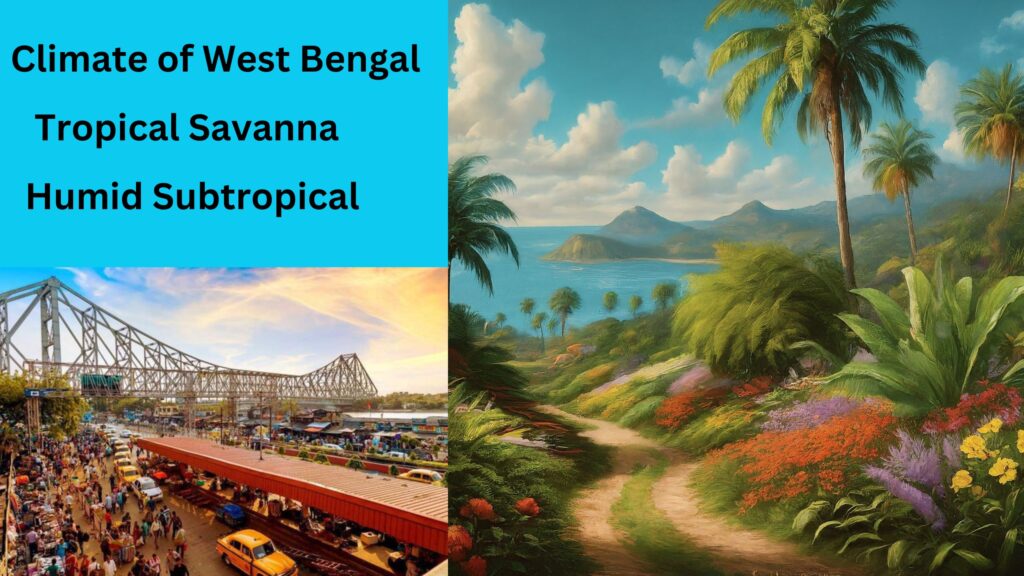The Climate of West Bengal is Tropical Savanna (Aw) in the Southern Portion of the State. In the northern part, the climate is Humid Subtropical (Cfa).

West Bengal is located in the eastern part of India. It has a diverse climate due to its varied topography, like the Himalayan mountain range in the north and the coastal plains in the south. The climate of West Bengal can be broadly categorized into three main regions: the Himalayan region in the north, the Terai and Duars region in the foothills, and the coastal plains in the south.
"West Bengal is susceptible to tropical cyclones."
What is Tropical Savanna Climate?
The Tropical Savanna Climate is the “Aw climate” in the Koppen climate classification system. It has warm to hot temperatures throughout the year with distinct wet and dry seasons. It experiences heavy rainfall during the wet season. The dry season has little to no rainfall. This climate supports diverse wildlife adapted to seasonal fluctuations.
What is a Humid Subtropical Climate?
The Humid Subtropical Climate is classified as Cfa in the Koppen climate classification system. It has a hot and humid summer, mild to cool winter, and ample precipitation throughout the year. This climate type is typically found in regions located on the eastern sides of continents, where prevailing winds carry moist air from oceans or seas.
Classification of Climate of West Bengal
Let’s study the climate of West Bengal by dividing it into different climatic zones.
Himalayan Region (Darjeeling and Kalimpong)
-
- This region, situated in the northern part of West Bengal, experiences a temperate climate due to its high altitude.
- Summers are mild and pleasant, with temperatures ranging from 10°C to 25°C (50°F to 77°F).
- Winters are cold, with temperatures dropping below freezing point, especially in higher elevations.
- Rainfall is abundant, with the monsoon season (June to September) bringing heavy precipitation, particularly in the form of rain.
Terai and Duars Region
-
- This region comprises the foothills of the Himalayas, characterized by a mix of tropical and subtropical climates.
- Summers are hot and humid, with temperatures often exceeding 30°C (86°F).
- Winters are relatively milder compared to the Himalayan region, with temperatures ranging from 10°C to 20°C (50°F to 68°F).
- Rainfall is moderate to heavy, with the monsoon season bringing the majority of the precipitation.
Coastal Plains (including Kolkata)
-
- The southern part of West Bengal, including the coastal plains and the city of Kolkata, experiences a tropical wet and dry climate.
- Summers are hot and humid, with temperatures often surpassing 35°C (95°F) and high humidity levels.
- Winters are relatively dry and mild, with temperatures ranging from 15°C to 25°C (59°F to 77°F).
- The monsoon season brings heavy rainfall, which is vital for agriculture in the region.
Overall, West Bengal’s climate varies from subtropical to tropical, with significant regional differences influenced by factors such as altitude, proximity to the Himalayas, and coastal location. The state’s climate supports a variety of agricultural activities and ecosystems, contributing to its rich biodiversity and cultural heritage.